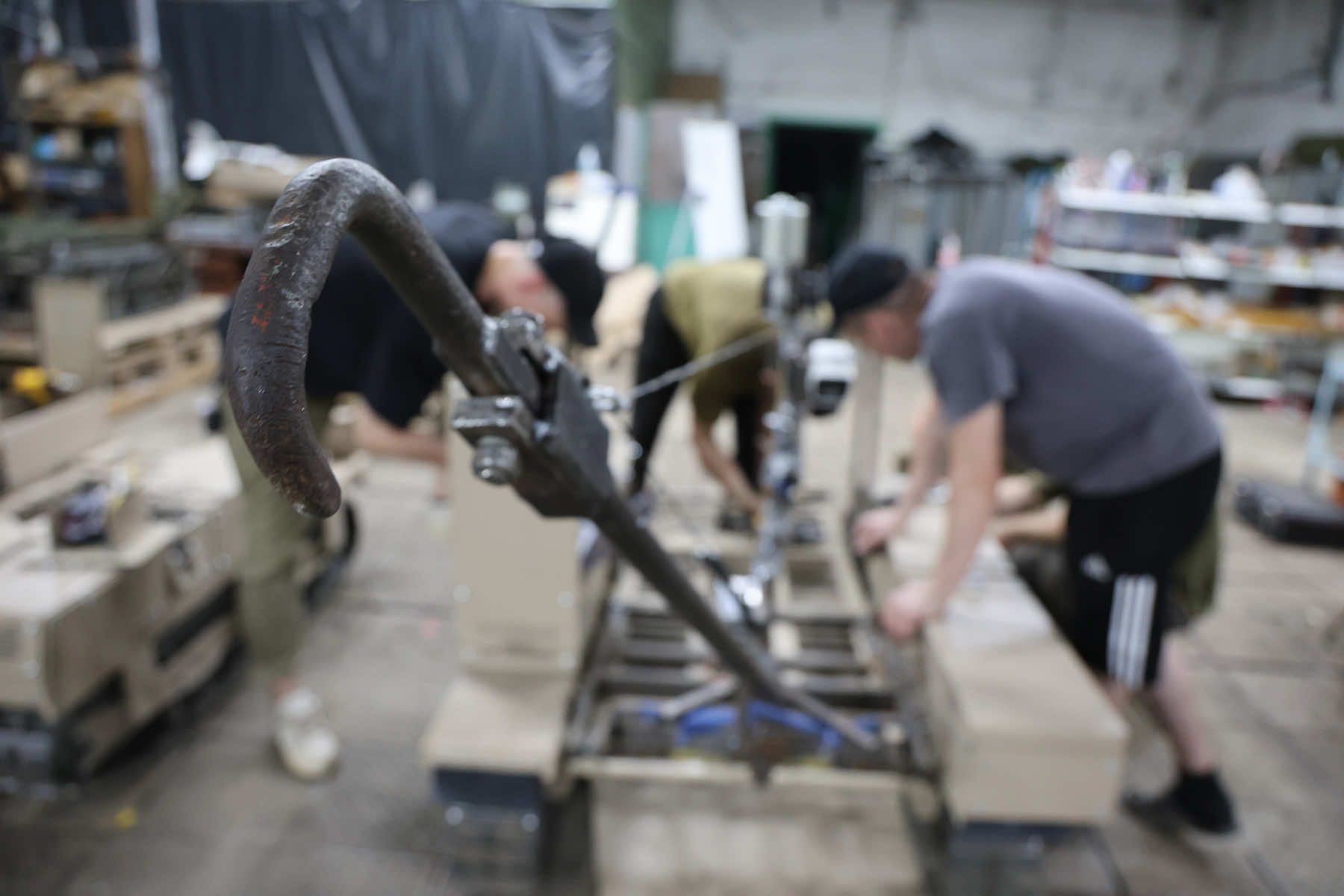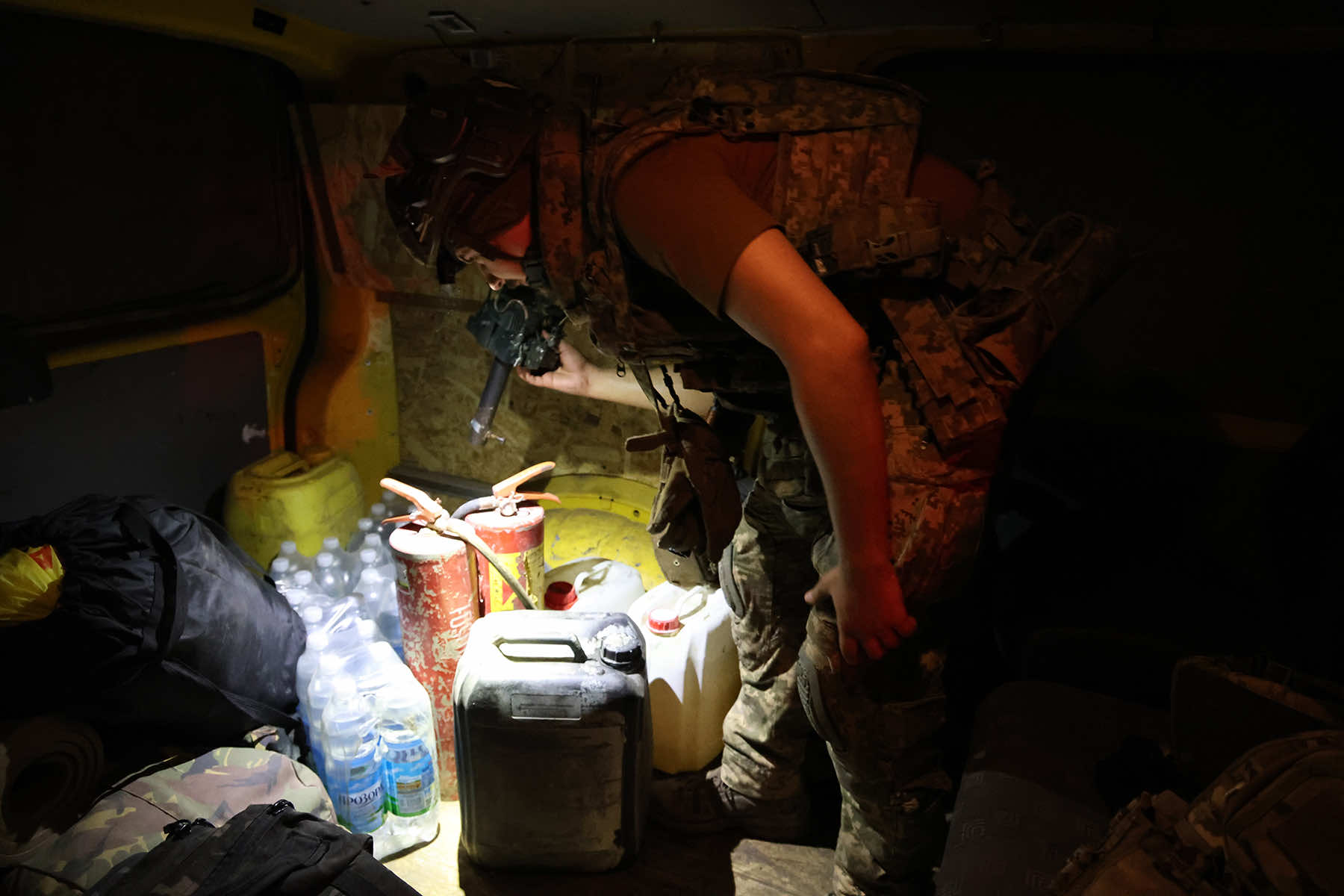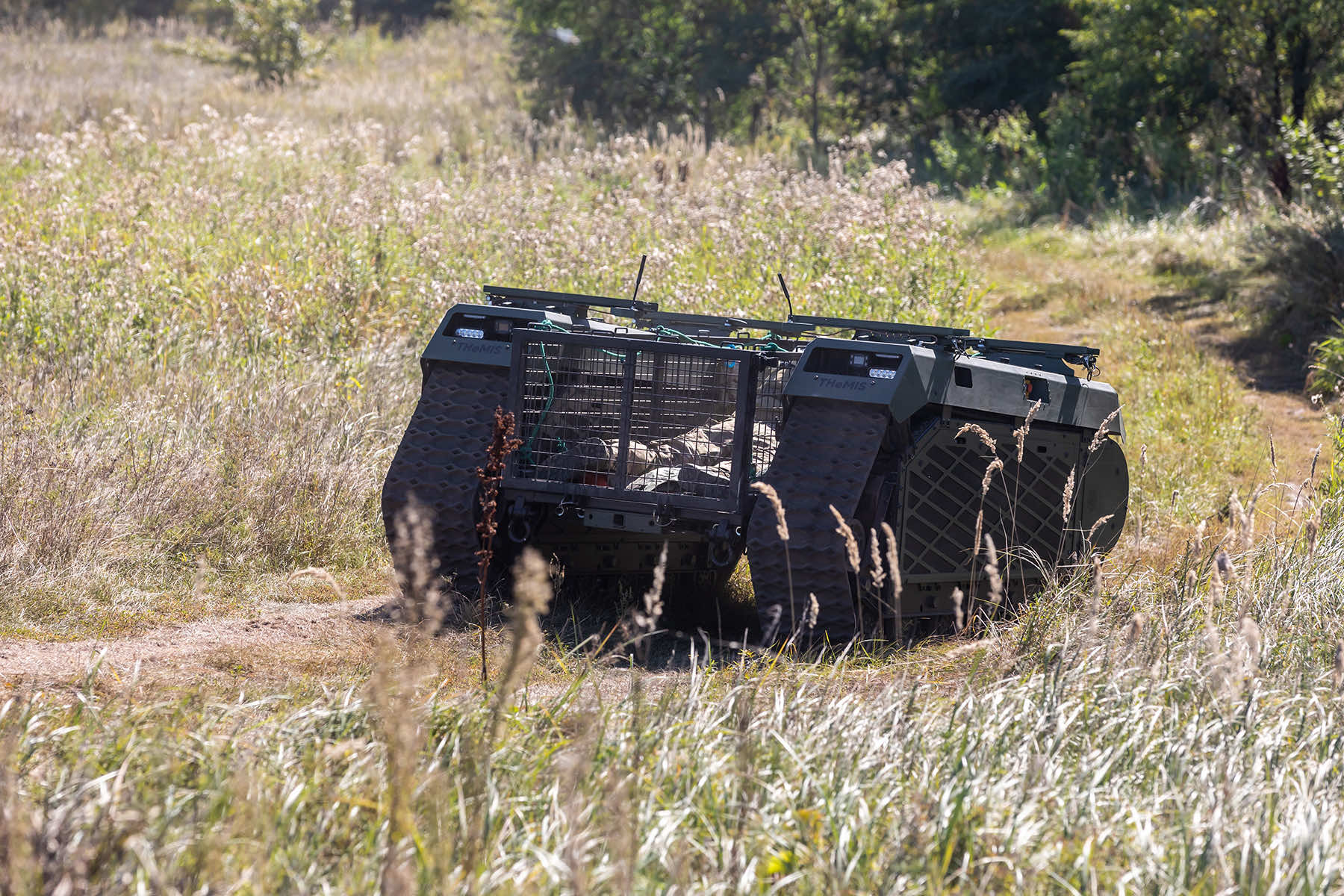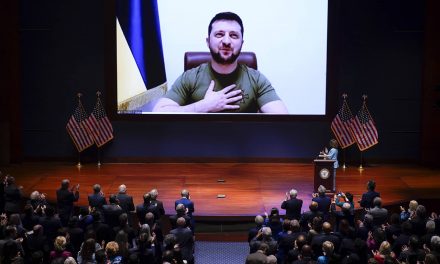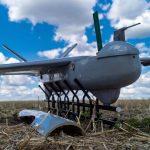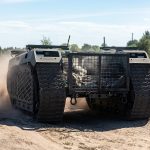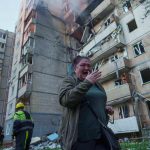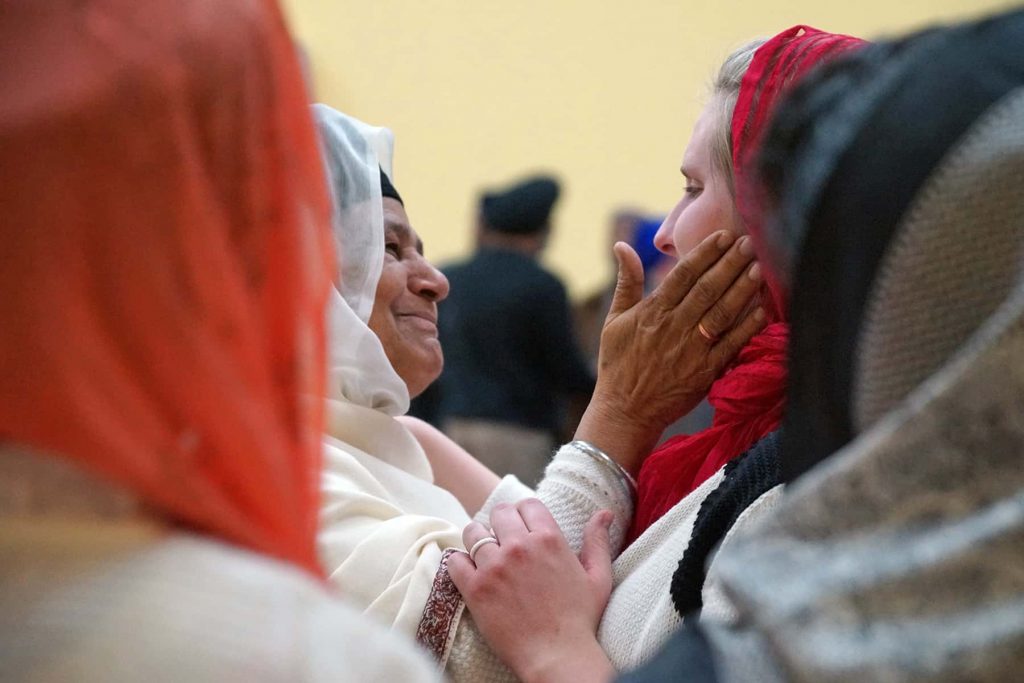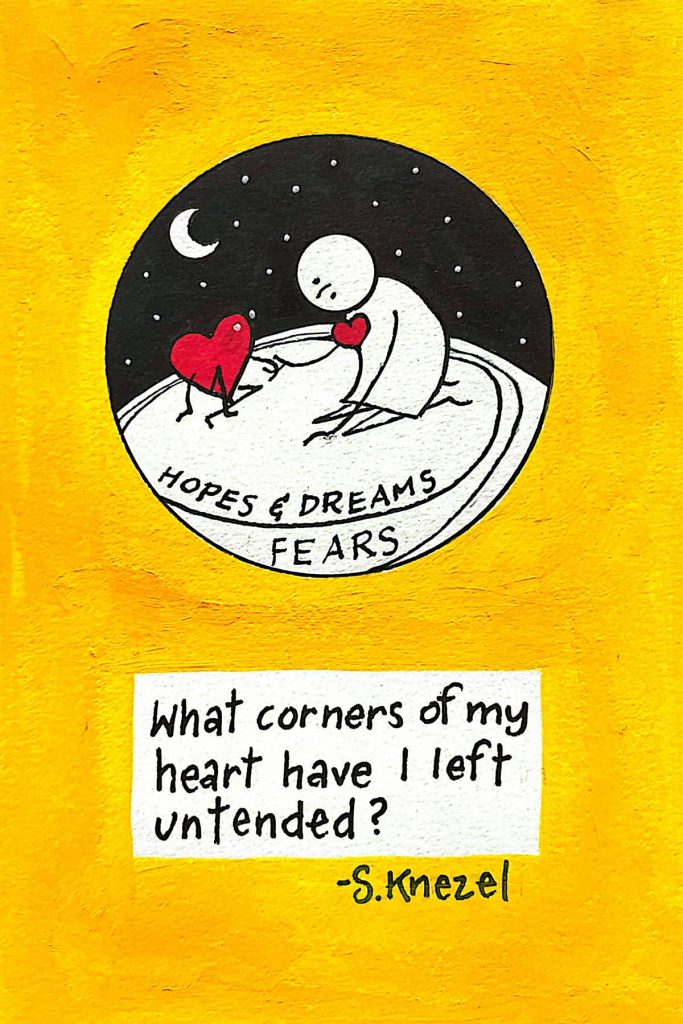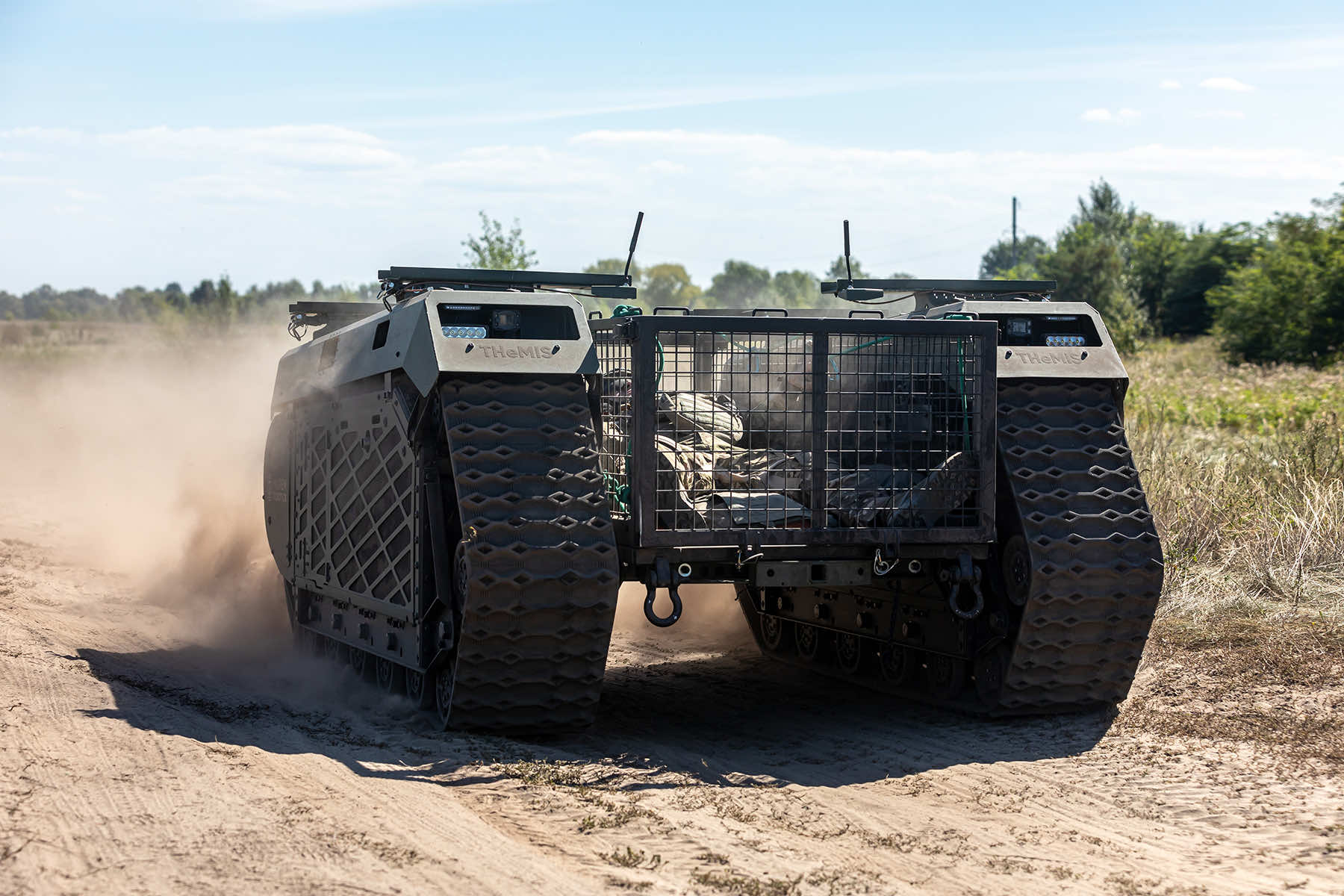
In a Soviet-era warehouse near the Kharkiv front, Eugene, a company commander in the 92nd Assault Brigade, oversees preparations for a night mission.
There is a debate over whether to send an unmanned ground vehicle (UGV) to rescue a wounded Ukrainian soldier waiting for evacuation.
“We’re crossing our fingers it will happen soon,” he says, as he explains injured soldiers sometimes remain at the front for weeks as they wait to be recovered. “Many are so badly hurt they’re unconscious most of the time.”
The average wait for an evacuation is a week, with some taking as long as a month. Wounded soldiers have died waiting despite being supplied with intravenous fluids and pain relief, he says.
Evacuations are dangerous, and commanders are constantly weighing the risks. In one case, the driver of an M113 armored vehicle sent to rescue a casualty was killed when it was hit by a drone. Six more soldiers were then injured in subsequent missions to rescue the same soldier.
Ukraine’s forces are increasingly turning to technology, using unmanned ground vehicles to bring casualties back to safety and to medical help. Not for the first time, the Ukrainian battlefield is proving a testbed for technology likely to characterize future wars.
“We never send people closer than 5km [3 miles] to the front if a robot can do the job,” Eugune says. “We navigate at night using landmarks like trees, towers, and roads. It’s like orienteering.”
It’s decided that today’s evacuation mission cannot go ahead, and the team shifts focus to other tasks. They include a logistics run to resupply the frontline and a mission to recover a UGV that has shut down near the front, jobs that previously would have put service personnel at risk.
Engineers from the unit have adapted one of its TERMIT ground robots, now known as “Mr. Hook,” to recover marooned UGVs.
“Sometimes it’s simple – an electric cable or debris caught in the tracks, even abandoned village power lines can be a hazard, tangling in the vehicle’s running gear,” Eugene says. “This one’s going to be more difficult, though, the UGV weighs about 120 kilos [265lbs], and with the load it’s carrying, nearly 270 kilos in total.”
As the mission plans are finalized, the soldiers pack the robots into a trailer.
Ruslan, who is responsible for delivering the UGV closer to the front, says both friendly and enemy drones are constantly overhead, and if an enemy drone spots their van, they try to hide under trees.
Sometimes he shoots back, but it’s often safer not to, especially if a drone could be carrying a large explosive that might fall nearby. Ruslan uses a Turkish-made Hatsan 12-gauge shotgun for defense against enemy drones.
Once the UGV is on the ground, Vitalik takes control, with Serhii as co-pilot and navigator, and in less than an hour, the robot reaches the frontline, where soldiers quickly emerge from a dugout to retrieve the supplies. As the robot races back through the dark to its starting point, the team spots its broken-down UGV on the road.
“Mr. Hook” is then deployed to recover the stranded vehicle. After several attempts, the driver manages to latch onto the disabled robot using the hook welded onto the rescue vehicle. Both UGVs then return to the van.
All the hardware and software are built in-house, and it takes about a week to adapt manufacturer-delivered UGVs so they can operate in frontline conditions, Eugene says. GPS often drops out due to Russian jamming, for example, so operators have to navigate visually using the feed from a nearby Mavic drone.
Custom software reduces delays in communication with the vehicles, but there is no standardized national system. Government-issued software is proprietary and slow to obtain, so the unit develops its own to maintain flexibility and adapt quickly to battlefield changes.
Operating UGVs is far more time-consuming than flying First-Person-View (FPV) drones, Eugene says. But while FPV drones can reach their target in minutes, they can only carry light loads.
Baba Yaga drones, for instance, can only carry about 10 kilos and wear out after roughly 100 missions. UGVs move slowly and must navigate terrain obstacles, but can deliver heavy payloads. They cost about $10,000, and Eugune says prices remain high because they are not mass-produced.
“Right now, there are only two viable roads in this sector, which the Russians patrol with drones,” he says. “UGVs are harder to detect because they’re electric and have a low thermal signature.”
The front is no longer a single trench line but, in places, a contested zone up to 15km deep with multiple layers of positions. Eugene says his team can’t cover some forested areas, forcing troops to carry supplies by hand for the last stretch. And the inconsistency of Starlink’s satellite internet connection doesn’t help.
On this mission in the Kharkiv region, the robot is running on a decentralized so-called mesh network rather than solely on Starlink, and the unit sometimes deploys a separate “bicycle penetrator” robot, which carries Starlink or mesh nodes as a forward relay. Typical signal range is about 7km, though a small aircraft carrying a transmitter can extend that to 30km.
On one mission working as a navigator for another unit that relies solely on Starlink, Eugene recalls guiding a UGV carrying a casualty over 1.7km of hostile territory. The trip took two-and-a-half hours because the Starlink connection dropped every five meters, he said.
The route was entirely within the kill zone, where no one could remain in the open, yet the injured soldier had to be moved along a regular road. “It’s just luck the UGV wasn’t destroyed,” Eugene says. “If they ran 100 missions like that, 95 would fail.”
Trees and jamming interfere with Starlink’s reliability because it needs GPS to locate itself and connect to satellites. Heavy jamming can completely cut the link, he says.
Depending on the terrain, the unit also uses Wi-Fi bridges, fiber-optic lines, and multiple mesh networks to communicate with its vehicles. The robot being used for the deliveries has 16 different connection access points and can automatically switch between them for the best link, he says.
And the adaptations are continuing. “In the future, we want ground robots to serve air defense roles, with turrets to shoot down enemy drones, clearing the way for others to move in,” Eugune says.
The next night, Eugene’s team deployed a UGV and successfully rescued the wounded man and another soldier who needed evacuation after being injured by a Russian FPV drone.
David Kirichenko
Drop of Light (via Shutterstock) and David Kirichenko
Previously published by CEPA (Center for European Policy Analysis) and reprinted with permission of David Kirichenko.

